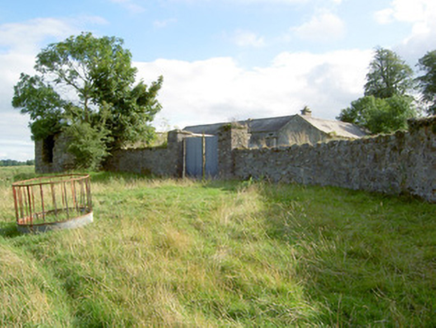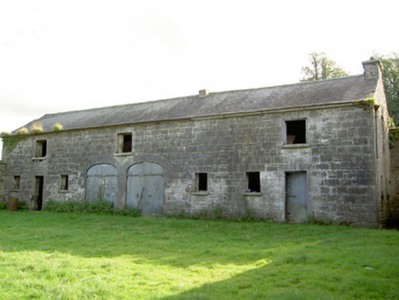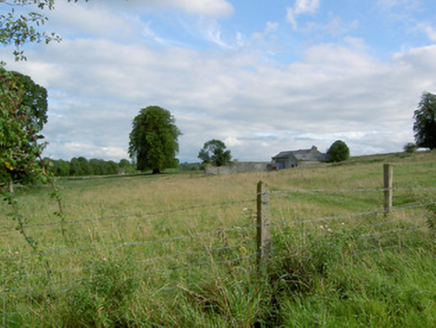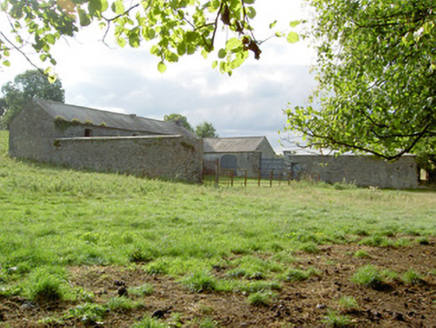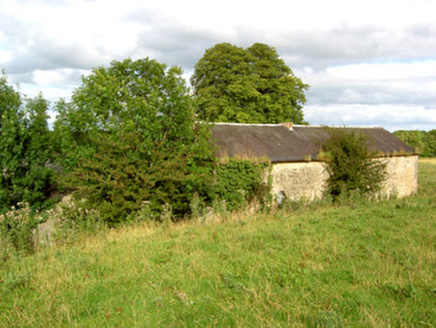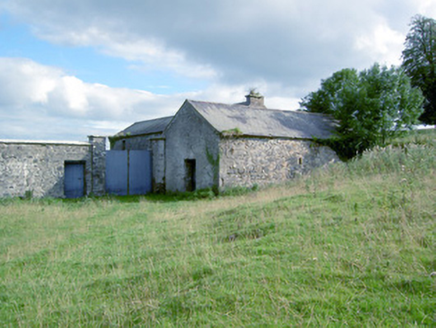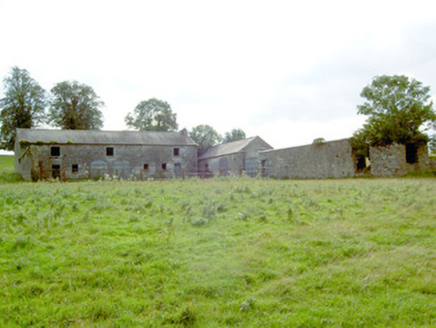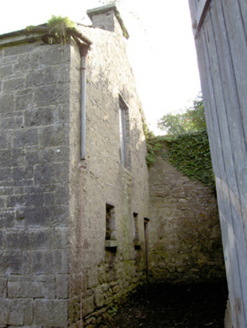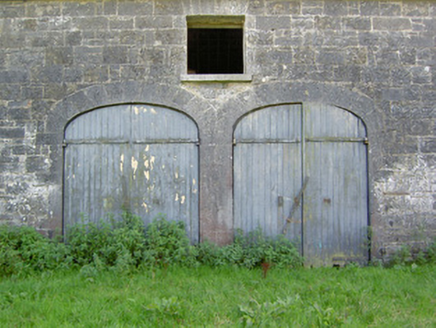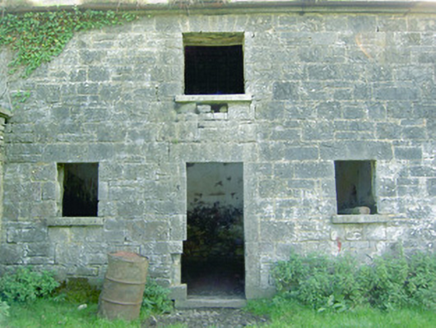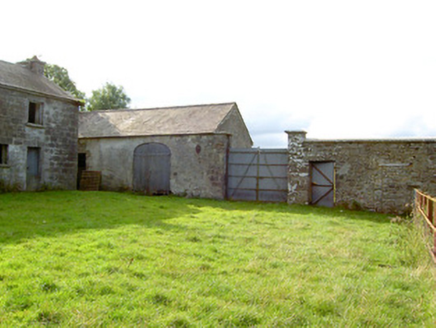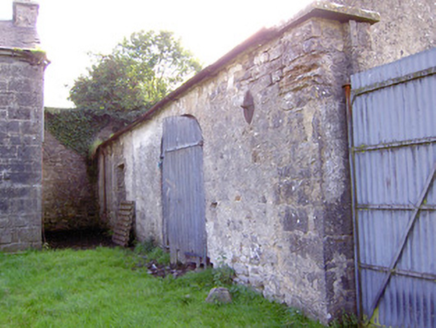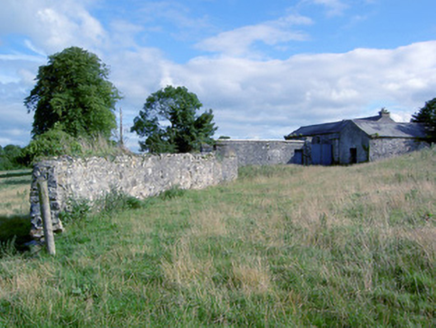Survey Data
Reg No
13401807
Rating
Regional
Categories of Special Interest
Architectural, Social
Original Use
Outbuilding
Date
1840 - 1880
Coordinates
213760, 270168
Date Recorded
30/08/2005
Date Updated
--/--/--
Description
Complex of outbuildings associated with Mount Jessop House (now demolished), built c. 1860, comprising a detached seven-bay two-storey outbuilding to the southeast and a detached two-bay single-storey outbuilding adjacent to the northwest. Pitched natural slate roofs with cast-iron rainwater goods; cut stone eaves course and rubble stone chimneystacks to two-storey outbuilding. Roughly dressed and squared limestone construction to two-storey building; roughcast rendered rubble limestone walls to single-storey outbuilding. Roughcast rendered finish to rear elevation (southwest) of two-storey building. Square-headed window openings to two-storey outbuilding having tooled cut limestone sills. Paired segmental-headed carriage arch openings to centre of two-storey outbuilding having flush dressed limestone voussoirs and double leaf timber battened doors. Square-headed door openings having flush dressed limestone block-and-start surrounds, one retaining timber battened door. Segmental-headed carriage arch opening to single-storey outbuilding having double leaf timber battened doors. Located to the rear (southwest) of site of Mount Jessop House (demolished). Gateway to the northwest end of single-storey outbuilding comprising a pair of roughly dressed limestone gate piers (on square-plan) having cut stone capstones and a pair of modern steel gates with corrugated-metal sheeting. Integral square-headed pedestrian gateway adjacent to northwest, set in rubble stone boundary wall, having modern gate. Ruinous single-storey rubble stone outbuilding to northeast end of rubble stone wall. Rubble stone boundary walls to the northwest and northeast of yard, running towards site of house. Set well back from road in extensive mature grounds to the east of Killashee and to the west/northwest of Ardagh.
Appraisal
These outbuildings act as an historical reminder of Mount Jessop House, now demolished. They survive in relatively good condition, despite being out of use of a considerable. The two-storey range exhibits fine stone work, the coursed and dressed limestone masonry construction and dressed limestone surrounds and voussoirs elevating it above many other outbuildings of its scale and date. The presence of chimneystacks in the ranges of outbuildings may suggest that these structures once had an additional domestic function, perhaps accommodating labourers and farm hands in the upper storey. The simple rubble stone boundary walls and gate piers add to the setting and complete this composition. Mount Jessop House was a six-bay three-storey house of mid-to-late eighteenth century appearance, having a pitched roof (earliest mention found is of a marriage of a Miss Alicia Jessop, eldest Daughter of Thomas Jessop, of Mount-Jessop, in 1764). It was derelict by the middle of the twentieth century and demolished c. 1980. It was described in 1826 (James Brewer ‘Beauties of Ireland’) as the ‘handsome residence of Rev. Jessop’. Mount Jessop was the seat of a branch of the Jessop (and Bomford-Jessop) family from the middle of the eighteenth century at the latest, and the house was formerly known as ‘Cloonrean’ or ‘Cloonryan/Clonryan’. It was the residence of a Thomas Jessop (1710 - 1766), High Sheriff of Longford (1745) and J. P. It was later the home of a Dr. Rev. Jessop in 1824 (1741 – 1825), who also had a house at Belvedere Place in Dublin at this time (Pigot’s Directory), and of a John Thomas Jessop, Esq. and J. P., in 1846 (Slater’s Directory). The house may have been sold (all contents sold) in 1847 following the divorce of John Thomas and Maria Lucy Jessop (newspaper article). A Francis Jessop of Mount Jessop committed suicide whilst serving as High Sheriff of Longford in 1836 (newspaper). The Jessop family were important in Longford during the nineteenth century and family members had their main seat at the now derelict Doory Hall (13314005), near Barry, and an additional house at Foxhall (demolished), near Legan.
